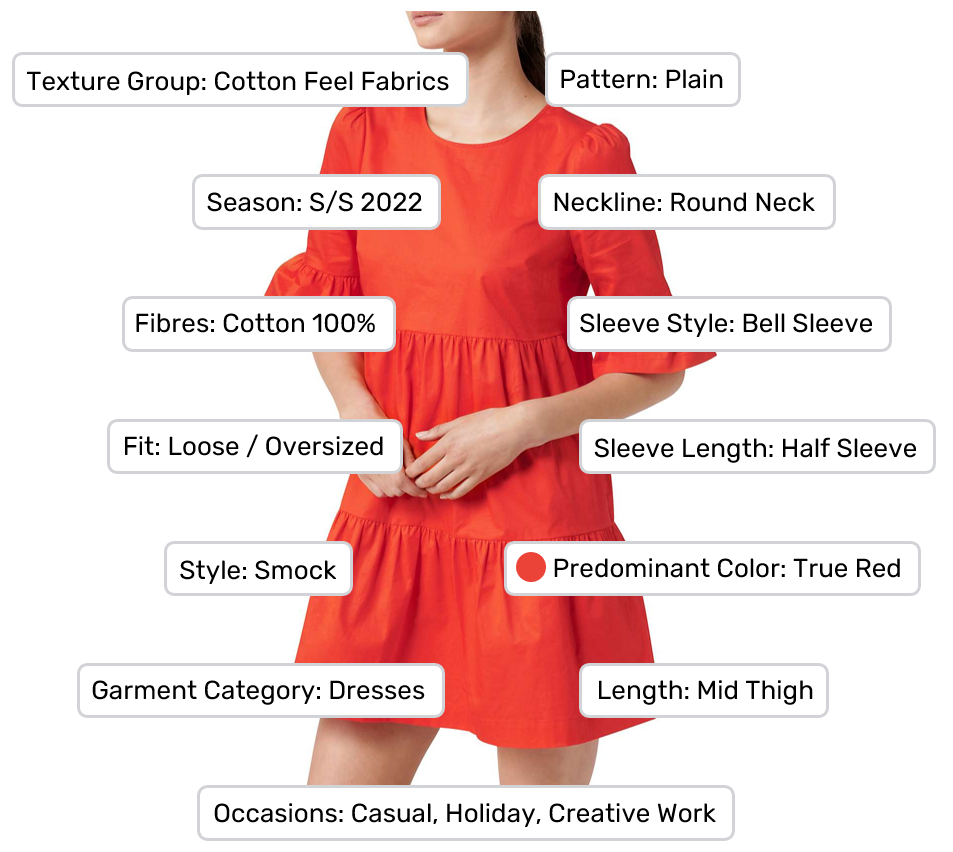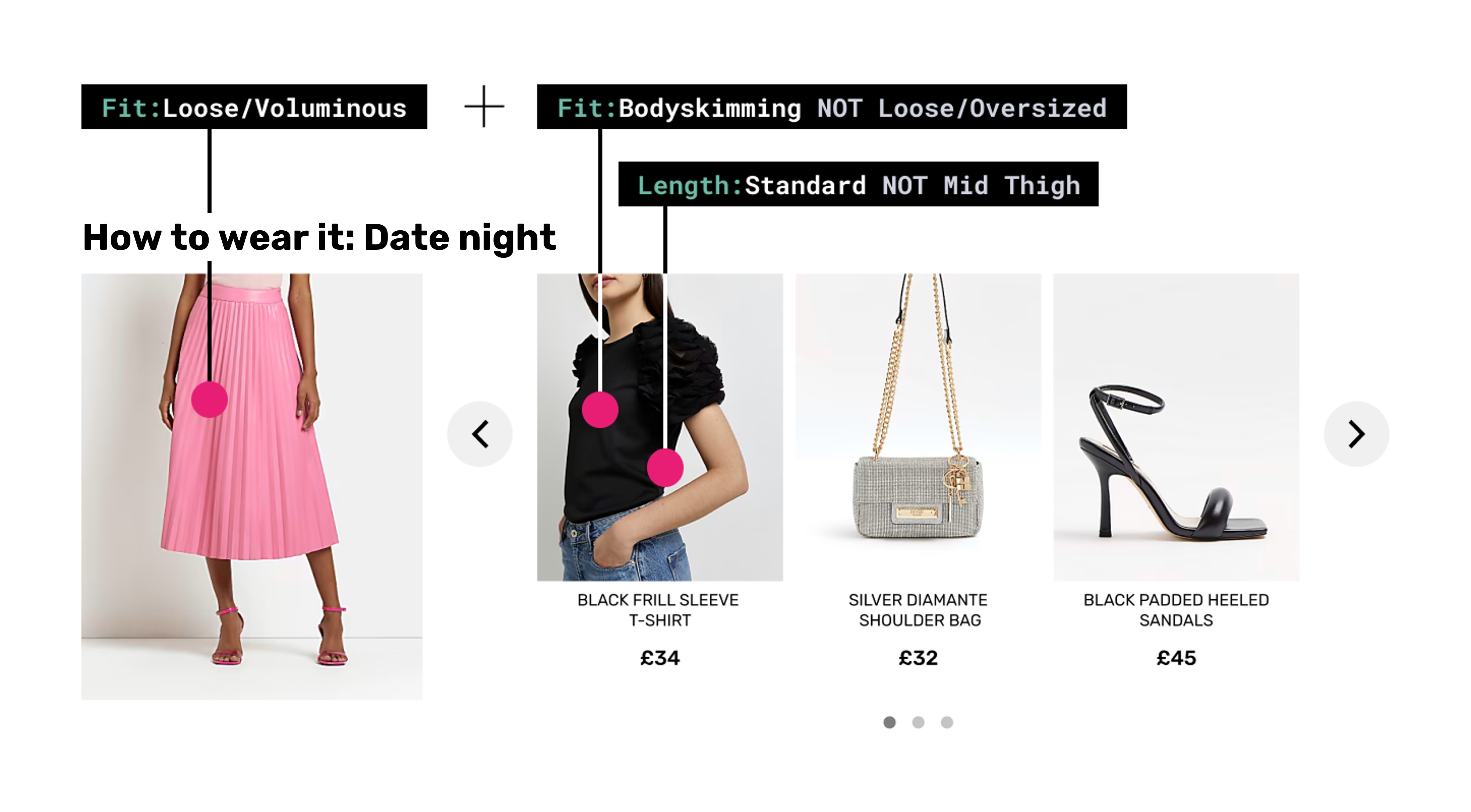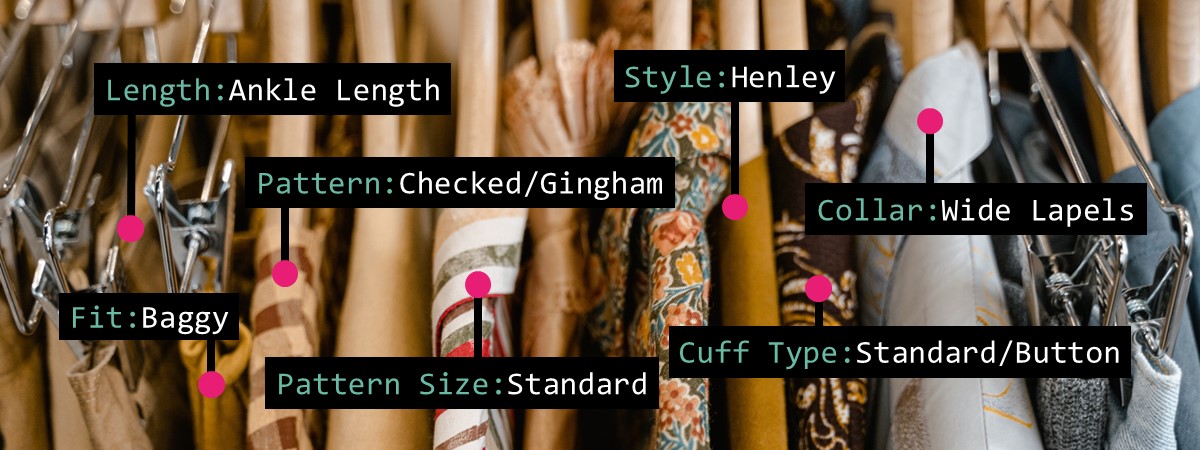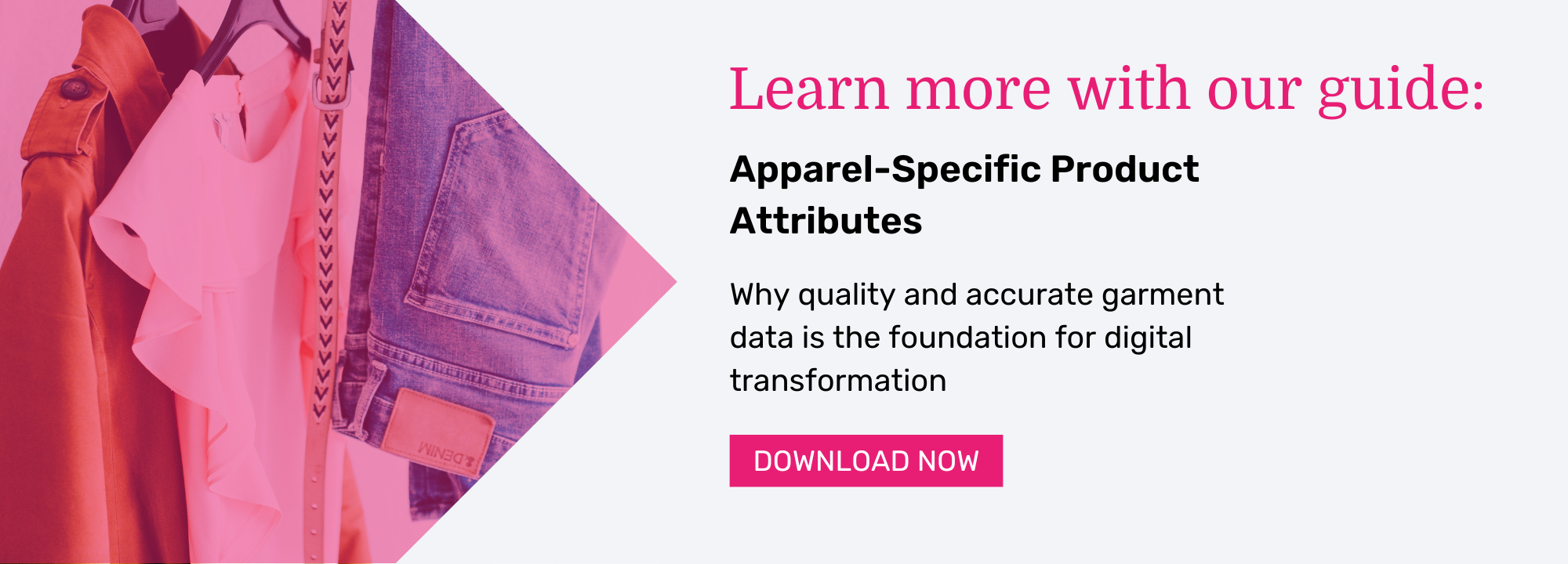Is your product data up to scratch?
Product data, and product attributes specifically, have the amazing capacity to improve many retail processes - including search relevancy, recommendations accuracy and inventory forecasting.
But to get good outcomes it’s not enough to have the same data as your competitors, you also need more accurate and differentiated attribution. Generic data will get you started but better and unique data helps you excel.
We’ve pulled out some of the key benefits of great product data:
1) Product Discoverability
One of the most important factors in retail is product discoverability. A shopper can’t buy what they can’t find. Data that describe the features of a product in detail and how and where it can be used will help improve rankings in search engines as well as increase accuracy of search results. Most retailers have around seven main attribute classes including length, color, neckline etc. This is only a fraction of what is required to tell a compelling and complete product story.
Search technology and behavior is shifting from rigid questioning ‘red dress’ - to the intuitive “bright, fun holiday clothes to relax in”. Richer and more detailed product attributes help brands respond to this more context and emotionally driven search.

Subset of attributes available
2) Personalization
Organizations that excel at personalization generate 40 percent more revenue from those activities than average players (McKinsey).
Deeper attribution also improves relevancy and personalization. Both can be measured in a few different ways but ultimately a high quality recommendation is the one that is the most relevant and inspiring to each specific customer. Machine learning models have improved recommendations tenfold but the size of their impact correlates directly to the volume and accuracy of the data going in; looking forward, their improvement will depend on the volume of data that is unique.
An effective goal is to understand who your most valuable customers are and connect with them at the precise moment they intend to buy. This starts with understanding their specific preferences to product features and ends with being able to present products within a context that resonates and with features they love and without those they won’t buy.
That means being able to interpret and deliver on a wide and rich taxonomy of interests and subjectivity (thinking and talking how each of your customers do) as well as hard and very granular product attributes.

3) Product Forecasting
Buyers and merchandisers can also benefit. While reviewing performance and forecasting at a product level is insightful, doing so at an attribute level can help uncover insights previously unavailable. If those attributes are also human readable, it gives teams a unique advantage of both improving outcomes and being able to explain how.
For example, more accurately determining your customers’ buying propensity for ‘balloon sleeves’ at customer size and shape level can be the difference between over or under buying into a trend. Dressipi has found that forecasts with attributes can lead to 10% increase in sell-through rate and 3%pt increase in contributed margin. And this is only the beginning.
Product Attribution is Critical for Growth
Put simply, attributes allow you to have a representation of your product in a format that machine learning can use to help you better understand your products, your customers and your opportunities - ultimately driving higher value customers and conversions and reducing returns and markdowns.
Dressipi has invested years of work in attribution understanding and development. It’s not a straightforward challenge and relies upon a combination of solutions including computer vision, semantic approaches, and natural language processing. No one approach works well singularly and the solution set is forever evolving.
Large data-led decision making businesses like Amazon, Pinterest, Etsy, Shein invest heavily in product attribution, knowing it’s critical to their growth. For fashion retailers, now is the time to get an attribute strategy in place - as those who are prepared to make the small investment today - will be in the best position to capture demand and loyalty and ensure long-term growth.
We’ve got a case study that you might find interesting, follow the link below to read the full story


